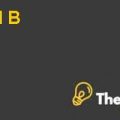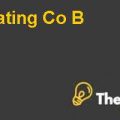
Saxon Financial Case Solution
- Does acquiring Saxon make strategic sense? Why? What are the pros and Cons of the acquisition from IGMs Perspective?
The decision to acquire Saxon is not very easy because of the prevailing economic conditions. Moreover, the funds also not performed well for a very long time as can be seen from the graph which is showing a strong negative trend. But as far as similarities are concerned both the firms are operating in the Canadian asset management industry which can provide a great deal of economies of scale as well as the benefit of cross selling their products which could significantly increases the customer base for the combined company as a whole.
Looking at the industry, there is a strong potential for the growth which is evident from the historical result of mutual funds of $ 3.6 billion in 1980 to about $ 696 billion in 2007. In addition to this another very important concerns for the customers are the product innovation, with the acquisition the combined company would have much to offer as compared with the competitors present in the market which could significantly increase the margins as well as the market shares of the combined firm. Saxon is relatively a small firm but with his strong management has created a reputation which is also evident from the increase in the number of assets under management by the firm.
But despite of this strong reputation the company is unable to perform well in the recent years which are also evident from the declining share price of the firm which resulted in weak investment returns from the investment. However from the perspective of the IGM, the deal could be very attractive because it could help the business in adding the product line. Moreover, it could also help in providing the management services for the business.
This acquisition of Saxon Financial would not only be adding the number of assets in the IGM but it would also provide the security to the investment wealth of the company. Lastly by considering the acceptable valuation of Saxon Financial, the deal is fairly valued which could help the company in gaining more.
Valuation of Saxon
This was the most typical part for the deal which was dealt using the three alternatives including (i) the discounting cash flow method; (ii) valuation of Saxon Financial using the public traded comparable company analysis and (iii) valuation of Saxon Financial using the comparable precedent analysis.
- Valuation of Saxon using the Discounting Cash Flow Method
In order to value Saxon Financials, the weighted average cost of capital is required to be computed. In the given case with the assumption of no long term or the short term debt, the value of the cost of equity would be the overall cost of capital for valuation. The valuation of cost of equity is computed using the capital asset pricing model approach. The value of risk free rate, market risk premium and the beta is given in the case as 3.66%, 7.42%, and 0.62 respectively. By using the formula:
Cost of Equity = Risk Free Rate + (Market Risk Premium * Beta)
The value for the cost of equity comes out to be 8.26% and the value for the weighted average cost of capital is also 8.26% because of the no debt services in the capital structure of the company. The next step in the valuation of Saxon Financial using the Discounted Cash Flow Method is the calculation of the free cash flow for the company which is computed using the following formula:.....................
This is just a sample partial case solution. Please place the order on the website to order your own originally done case solution.









